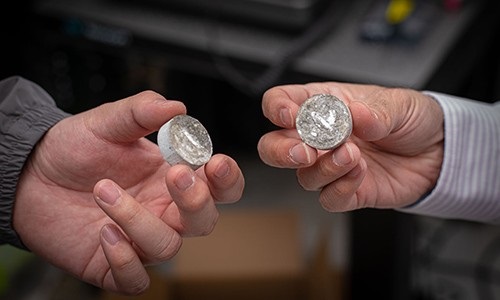 Thursday, October 3, 2024
Thursday, October 3, 2024  Thursday, October 3, 2024
Thursday, October 3, 2024 
Concrete has a massive carbon footprint, so technologies that boost its performance and enable it to last longer could have profound benefits for the environment. This has led to the development of self-healing concrete that can repair its own cracks, and scientists have now demonstrated an exciting new form of this that makes use of an enzyme found in human blood.
Tiny cracks that form in concrete mightn’t pose an immediate problem to the structural integrity of a construction, but as water gets in and the rupture spreads it can greatly compromise its strength. The idea with self-healing concrete is to intervene in this process while the cracks are still tiny, sealing up the material to prevent not just a catastrophic collapse, but expensive maintenance or a complete replacement of the structure.
This field of research has turned up all kinds of interesting potential solutions over the years. We’ve seen versions that pack their own sodium silicate healing agents, ones that feature bacteria that produce special glue to knit together these cracks, and others that fill up the gaps with fungus. While promising, scientists at the Worcester Polytechnic Institute have conjured up what they believe is a cheaper and even more efficient solution.
The team sought inspiration from the human body; more specifically, from the way an enzyme in red blood cells called carbonic anhydrase (CA) is able to quickly transfer CO2 from the cells into the bloodstream.
“We looked to nature to find what triggers the fastest CO2 transfer, and that’s the CA enzyme,” says study author Nima Rahbar. “Since enzymes in our bodies react amazingly quickly, they can be used as an efficient mechanism to repair and strengthen concrete structures.”
Check out more news below: